
................................................................................................................................................................................................................................................................................................................................................................................................................................................................................................................

Copyright © visitindia.org.in. All Rights Reserved.
Travelogues/Travel Logs of Roadtrips
Hit the road with the summary guides of our trips to various places in India. Any information feel free to drop a mail at info@visitindia.org.in


Get online driving directions, route guides, weekend planners, and customised itineries. Check out a few of our favorite user road trips, then start an adventure of your own.....Explore India by Road

Find us :-
Gwalior
Sightseeing in Gwalior
Gwalior Fort
This is an important landmark of the city. The ruins of many temples and palaces can be seen within its walls. Teli ka Mandir and the Sahasrabahu temple dedicated to Vishnu, inside the fort are worth a visit. Incidently the name Sahasrabahu has been distorted and the temple is now referred to as Saas Bahu ka Mandir. Man Singh palace has a ticketed entry of Rs 5/- and videography for Rs 25/-. A sound and light show is held here from 7pm onwards (do check timing) at a ticket of Rs 50/-.
Rock sculptures of Jain tirthankaras can be seen inside the fort walls. There are more than 30 figures and also the first tirthankar - Adinath. Chaturbhuj temple of Lord Vishnu is on the eastern side. A temple dedicated to sage Gwalipa is also seen here.
Gujari Mahal Palace
There is an Archaeological Museum inside this palace. Entry is Rs 50 and is open from 10am to 5pm, Monday holiday. The palace was built by Raja Man Singh for his Queen Mrignayani. There are sculptures, frescoes etc here, worth seeing is the salabanjika or divine goddess, can be seen on request. contact the curator.
Hill-top Fort
There are huge stone statues of Bahubali, cut out of massive rocks on the way to the fort. The tallest is 17 metres in height. There is also a sandstone mausoleum of the Sufi saint, Ghaus Mohammed near the fort in the old town of Hazira.
The Jai Vilas Palace
This palace belongs to the Scindia family and a large part of it has been converted into a museum known as the Jivaji Rao Scindia museum. Entry fee is Rs 40/- and camera Rs 50/-. Open from 10am to 5pm, closed on Monday. There are many exquisite pieces of lights, chandeliers, a working model of railway train with a silver train.
Tomb of Gaus Mohammed
Set in a lovely garden with a cemetery, the garden where the tomb of Tansen is located is also the venue for an annual music festival held during November. Admission is free. The musician was buried under the tamarind tree perched in the garden and is believed that its leaves sweetened his voice.
Sun temple
The Birla's version of the Sun temple at Konark stands here. It has a garden and beautiful carvings.


Image - wikipedia
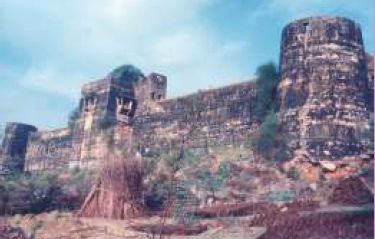


The fortress is situated about 5 km from Bhitarwar road. It was built in 16th-17th century A.D. by Raja Hamir Dev. Temples of Ram-Janki and Radha- Krishna are situated inside the fortress. It has two gates, namely Hathi Darwaza and Sadar Darwaza. The treaty between the British and the Scindias is famous as Salwai Treaty.
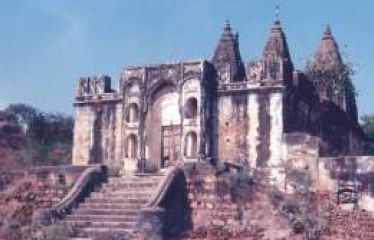

Padavali and Bateshwar (40 kms)
This place came into focus after the excavation of 2nd century pillars. More than 400 temples have been found here, and the Bhuteshwar Mahadev temple as old as 8th century. This trip needs a day from Gwalior and the route shoul be done before sunset. The Gwalior - Morena route is very lonely.
Datia (69 kms)
Gopeshwar temple and the 7 storeyed palace are worth watching, 3 kms from here is Sonagiri which is a sacred place for Jains, there are 77 temples on this hill top which has been traced back to the 17th century.
Shivpuri (115 kms)
Shivpuri was once the summer capital of the Scindia rulers of Gwalior. Even earlier its dense forests were the hunting grounds of Emperor Akbar. Shivpuri's royal visitors used to live in the exquisite palaces, hunting lodges and intricately embellished marble chattris (cenotaps) erected by the Scindia princess. Today the National park is a sanctury for not only rare wildlife but avifauna as well. There are some excellent spots for bird watching too.


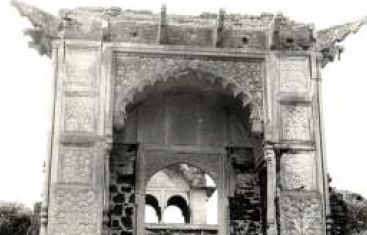
It is situated about 48 km from Gwalior on Gwalior- Senwda road. Behat is the birthplace of Tansen. There is a Shiva temple. Tansen is said to have performed severe 'riyaz' of music at the place where this temple exists. It is believed that as a mark of respect to his devotion, the temple bent in half. Tansen is said to have practiced incessantly here for removing a fault in his voice. Rana Chhatar Singh built a palace here in 1767 A.D., which is called Rana Ki Baithak.



Abulfazal writer of "Ain-e-Akbari, "was one of the jewels of Akabar's court. Abul Fazal was assassinated while he was returning from the Deccan by Vir Singh Bundela (who later became the ruler of Orchha) between Sarai Vir and Antri (near Datia) in a plot contrived by the Mughal Prince Salim, who later became the Emperor Jahangir in 1602, because Abu'l Fazl was known to oppose the accession of Prince Salim to the throne. His severed head was sent to Salim at Allahabad. Abul Fazl was buried at Antri. Abul Fazl's son Shaikh Abdur Rahman Afzal Khan (December 29, 1571-1613) was later appointed governor of Bihar in 1608 by Jahangir.
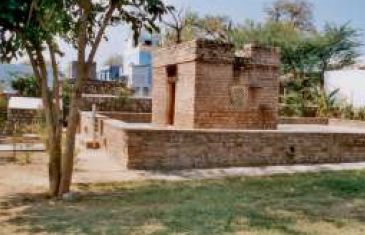
Gwalior was an important princely state during the pre-independence era. Gwalior's colourful history going back to the 8th century is a mosaic of Rajput clans of the Pratihasas, Kachwahas and Tomars each leaving their marks on the city's magnificent monuments. A trip to Gwalior is incomplete without a visit to the fort, Scindia palace and the tombs of Ghaus Mohammed and Tansen.
As a modern city Gwalior is famous for its cloth mills, producing some of the best fabrics in the country. The city is divided into 3 parts Gwalior houses the fort complex, Lashkar with the Jai Vilas Palace, and Morar are the outskirts. The city serves as an access point for the tourist centres of Orchha and Shivpuri.
Gwalior is an important railway station and is well connected to almost all the major cities of India. Best connections from Agra and Delhi are provided by Shatabdi and Taj Express in the morning. Both the trains make the return journey in the evening. Gwalior has well connected bus services to Agra (119 kms), Delhi (325 kms), Bhopal (423 kms), Indore (486 kms), Jhansi (101 km).
Gajak
The streets of Gwalior gives introduces you to the home made sweet gajak. Buy freshly baked ones still hot from these shops.
Chanderi sarees
Chanderi is a small town around 168 kms, it is famous for its hand-woven Chanderi sarees. It is a renowned centre for traditional weavers of saree. You can pick up thse sarees from the Arihant Emporium, Bada & Naya Bazaar etc.
Maheshwari sarees
Maheshwar is a small town nearly 362 kms away and is famous for the Maheshwari sarees, they are pure silk sarees with lovely motifs. You can pick up one at any of the Govt recognised emporiums.
The open markets have lots of options to look out for, curios of Khajuraho, wall hangings, carpets, etc can be bargained for.
Lauhgarh Fort
The fortress is located on the bank of Non river and 45 km from Gwalior. The interior portion of the fortress in now ruined. Its gate is also ruined. It was built by Raja Hamir Dev in the 16th and 18th century A.D. Fortress is survived by only walls but reminds us of the days gone by.


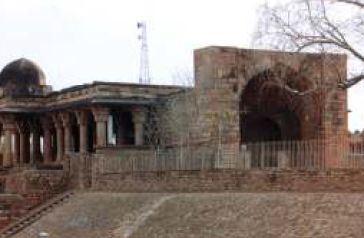
The monument exists in front of the Man Mandir at Gwalior fort. It was built by Maharaja Man Singh and the court of the rulers of Tomar dynasty was held here. Musical concerts were also organized here. There is an ancient step-well inside the monument where separate chambers have been built for the queens to bathe. It has 80 pillars; hence it is called Assi Khamba Ki Baori.

Tigra Dam, Tigra
The dam is situated at a distance of 12 kms from Gwalior. It provides water sport facilities and a good restaurant.
